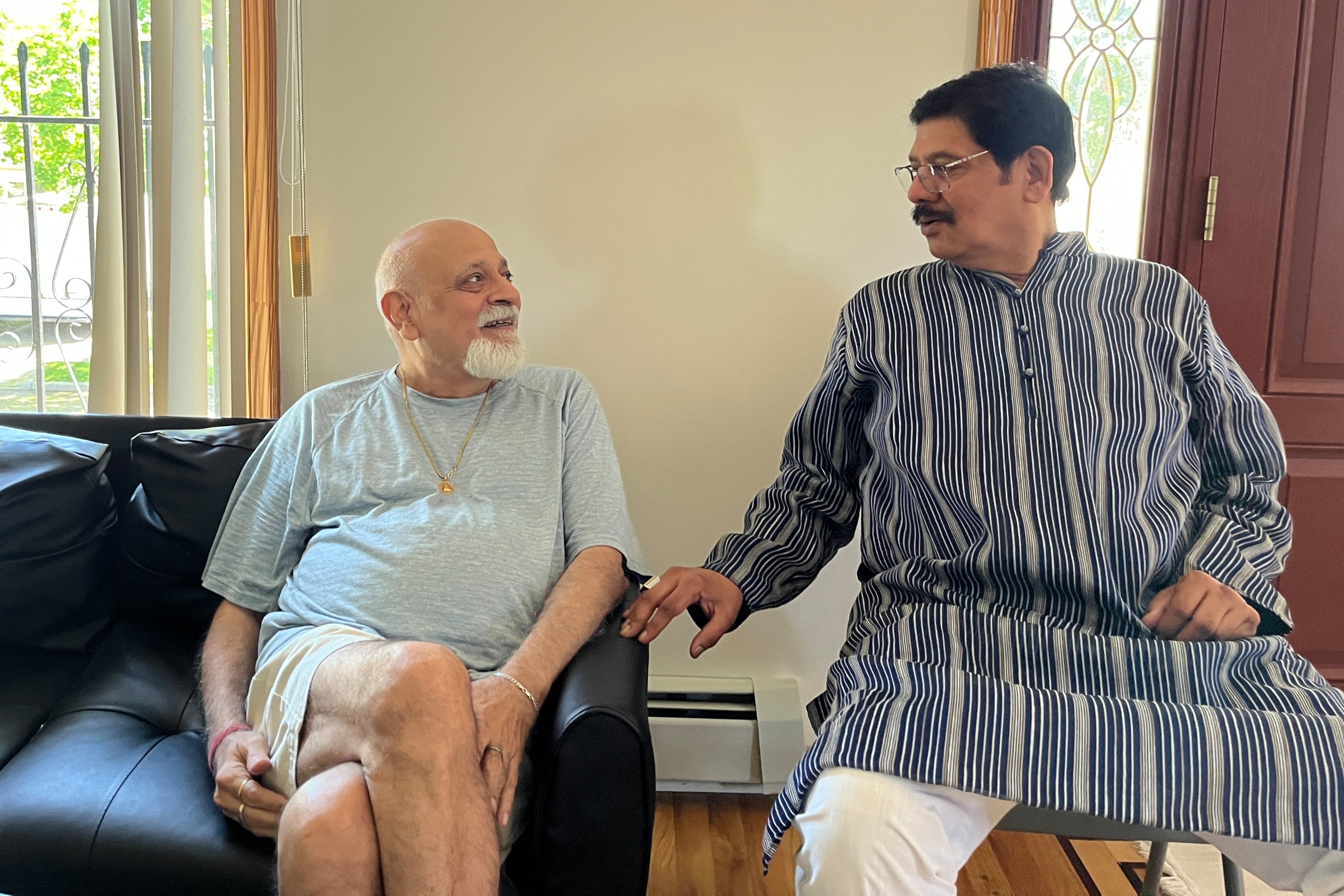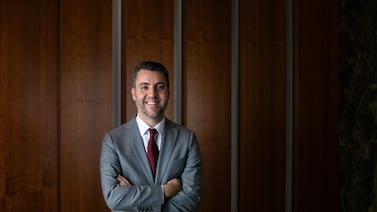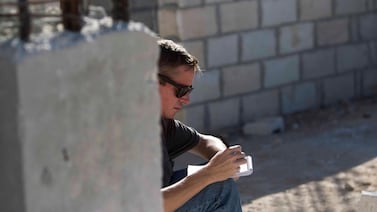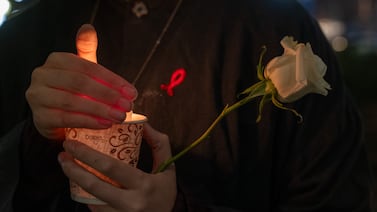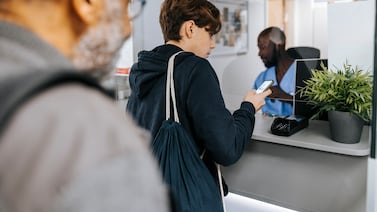Public health, explained: Sign up to receive Healthbeat’s free New York City newsletter here.
Each morning, Amit Ahuja brews a cup of hot masala tea before heading out on his daily walk to Apna Bazaar, an Indian supermarket, about a mile from his home in Queens. He lives with three other seniors in a “co-living” home, and together they spend time playing cards, exchanging stories about their children, and practicing yoga and meditation.
“I’m at peace,” says Ahuja, 68. “And when your mind is clean, it’s good because it feels better to live that way.”
Ahuja, who is originally from India, divorced over 30 years ago and had lived between Long Island and Queens before he joined the shared apartment in Glen Oaks, Queens, a year and a half ago. The building, run by India Home, is a nonprofit organization that serves South Asian and Indo-Caribbean immigrant seniors.
When he heard the group was opening a co-living home, he immediately signed up. Residents are selected based on their shared cultural background, including common language, diet, and religious practices. The residents have access to social workers, transportation to the senior centers for daily programming, and various field trips, including to temples in the tri-state area.
In 2018, about 34% of adults ages 50 to 80 reported feeling a lack of companionship at least some of the time, rising to over 41% in 2020 as the Covid-19 pandemic hit the United States, according to a study published in JAMA. Since then, it has fluctuated and dropped slightly to 33% in 2024. Loneliness among seniors most commonly affects those who do not work, who live alone, or have lower household incomes.
Lack of social connection can have serious health effects on older adults. In 2023, then-U.S. Surgeon General Vivek Murthy called loneliness an epidemic in a report citing a 29% higher risk of heart disease, a 32% higher chance of stroke, a 50% higher likelihood of developing dementia, and a more than 60% higher risk of premature death.
“Co-living is very popular among the younger millennial generations across the world,” said Dr. Vasundhara Kalasapudi, a psychiatrist specializing in geriatrics who serves as executive director of India Home. “After Covid, some of our seniors lost their partners and became much more lonely. That’s when we thought, why not apply the co-living model for seniors?”
A safe space to vent about children who don’t visit
Like the four other residents in the two-story home, Ahuja rents his own bedroom and bathroom, with a shared kitchen, kitchenette, two living rooms, and one other shared bathroom. He pays $1,000 per month. In New York City, the average monthly rate in long-term care can cost about $14,000 per month.
Samra Rashid, the social work director at India Home, said co-living with other South Asian seniors gives Ahuja and his housemates a safe space to talk with each other about their frustrations with their children, especially their lack of visits.
“To me they should let it out because if you’re hurt, saying something about your children does not mean that you don’t love your children,” Rashid said. “You can love them and be mad at them.”
Co-living for seniors originated in Denmark in the 1970s and since then, parts of the United States began adopting this way of life. California has led the way, with Phoenix Commons, which offers communal living for seniors 55 and older in the Bay Area.
India Home opened the first co-living home for seniors in New York City, in Glen Oaks, at the end of 2023, matching seniors who share similar diets, languages, and cultural backgrounds. The organization launched a second one in 2024 in Jamaica, Queens, housing Bangladeshi Muslim seniors. A third is planned, also for Jamaica, but a loss of federal funding from the new Trump administration is disrupting the project.
Ahuja waited about a month to move into the Glen Oaks co-living home, and the waiting list has since grown to nearly two dozen.
Umesh Naukkala, who has worked as a program assistant at India Home for the past three years, witnessed the start of the co-living home. He noticed that before they came to live there, many of the seniors felt lonely, with no one to talk to as their children seemed busy with their own lives. With co-living, the residents are able to spend time together and build connections.
“The aunties are out right now. Otherwise they would be here watching TV, talking, drinking tea or coffee” with Ahuja, Naukkala said. “It’s a friendly environment.”
Common language important for matching co-living seniors
Kavita Sivaramakrishnan, an associate professor of sociomedical sciences at Columbia University’s Mailman School of Public Health, said intergenerational co-living is the best model for alleviating loneliness, but the shared culture at India Home is an important element.
“I’ve always been against the idea of older people just living with each other,” Sivaramakrishnan said. “Intergenerational mixing is very important because otherwise you become generationally isolated.”
In India, the population speaks over 100 languages with tens of thousands of dialects, making language a huge factor in matching seniors for co-living. At the home in Glen Oaks, the seniors all speak Hindi, while at the house in Jamaica, they speak Bengali.
“Language is the number one priority when matching seniors,” Naukkala said.
“If co-living is purely a place where you just live with people, but you don’t share a certain kind of cultural ethos with them, then I think co-living can be equally socially isolated for South Asian seniors,” Sivaramakrishnan said.
Unlike traditional senior or nursing homes, co-living offers older adults greater autonomy, as their daily activities are not closely monitored, and they have more freedom in how they spend their time. However, this varies depending on their level of movement.
“Mobility is one of the key ways to overcome social isolation. It’s a major factor that distinguishes people who are alone but still have access to social connection,” Sivaramakrishnan said. “A lot of homes will only take on people with a certain amount of fitness. And a certain amount of ability to live together, so we have to remember that we are not talking about the most vulnerable groups.”
This dynamic becomes even more complex in immigrant communities, with the expectation for older adults to live with their children as a cultural norm. As a result, many may not seek institutional care. In 2020, non-Hispanic white seniors made up 78.5% of the U.S. population ages 85 to 100, but comprised 92% of assisted-living residents in 2022.
Sivaramakrishnan said that when thinking about the South Asian diaspora, migration falls at the center, and it occurred in two major waves. First, the Immigration and Nationality Act of 1965 replaced the quota-based immigration system that had existed since the 1920s with a preference system based on labor skills needed by the United States and family reunification. This led to an influx of Asian Americans, many of whom are now part of a generation growing old in the same communities where they settled. The second wave in the late 1980s and early 1990s includes older migrants who arrived later in life to live with their children in the United States.
“In any case, the second group is even more vulnerable because they moved without social networks,” Sivaramakrishnan said.
Proximity to senior center a plus for co-living residents
At the second co-living residence opened by India Home, in Jamaica, 72-year-old Rokeya Begum and 77-year-old Salema Khatun have found comfort by sharing common interests while living together. For the past 11 months they have spent their days writing, cooking their favorite dish – fried fish – and hosting picnics.
They live in a two-story home with three women upstairs, sharing one bathroom, and a husband and wife living downstairs. Khatun, a homemaker who moved to the United States from Bangladesh in 1994, lost her husband two years later to a brain hemorrhage. Living in Jamaica, she used to be closer to the senior center, but after she moved with her daughter to Long Island, it was too far away. When she heard about the co-living home opening three blocks away from the senior center, she applied right away.
“I want to be able to come here everyday, exercise, attend lectures, and join prayer,” Khatun said.
Begum, who was a first-grade teacher and poet in Bangladesh, moved to the United States in 2020. Two years ago, her husband died of a stroke. She said she takes time to settle into new situations, but is enjoying life in the co-living home and plans to stay long-term.
The women said it’s been an adjustment living with new adults later in life.
“All people are not the same,” Begum said. “Human beings have different personalities, but I always try to adjust with others.”
This story was produced in partnership with the Health & Science Reporting Program at the Craig Newmark Graduate School of Journalism at CUNY.

